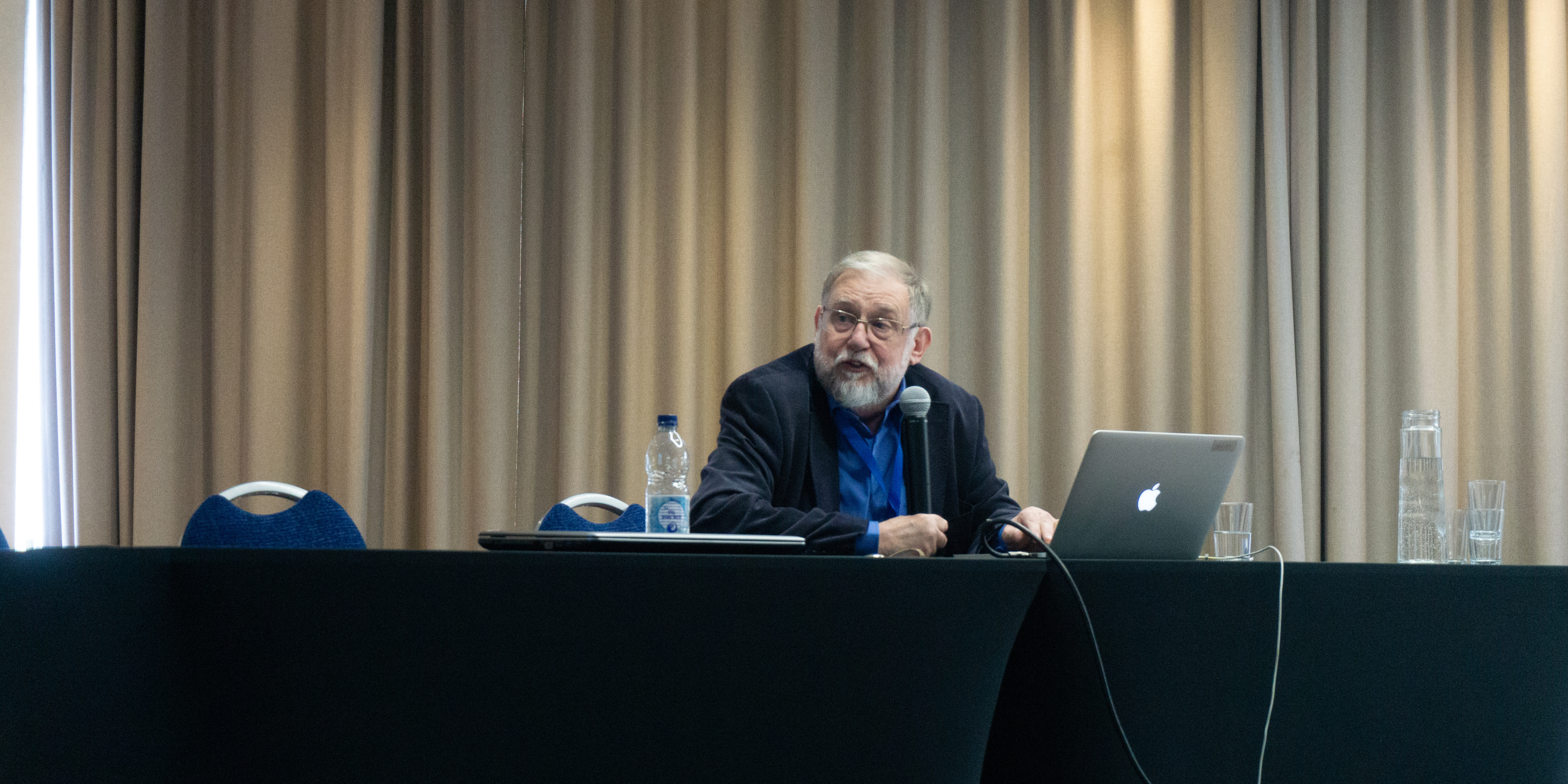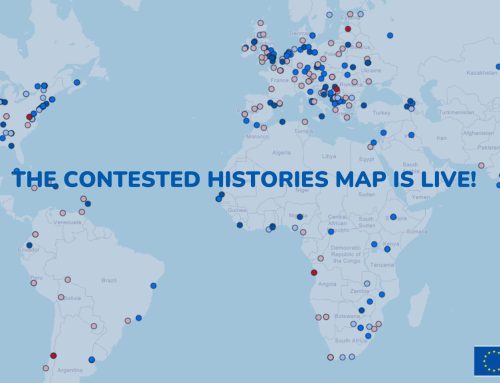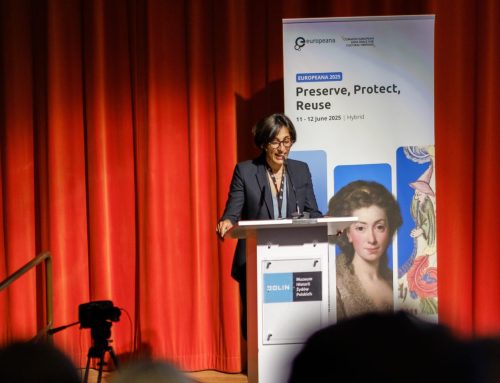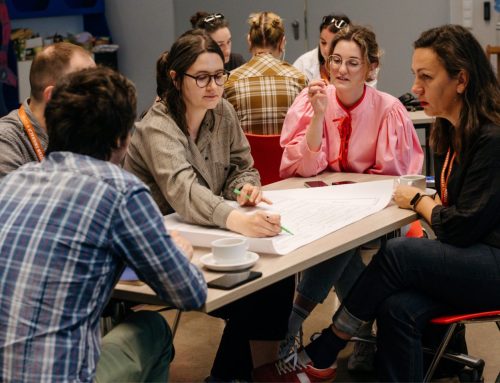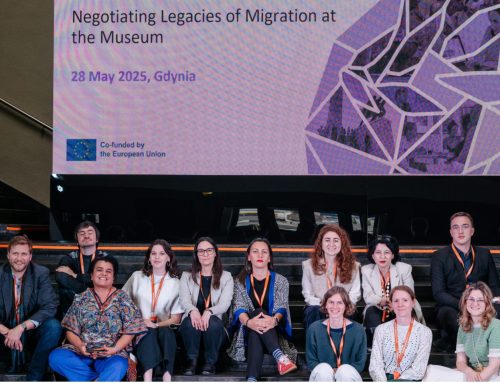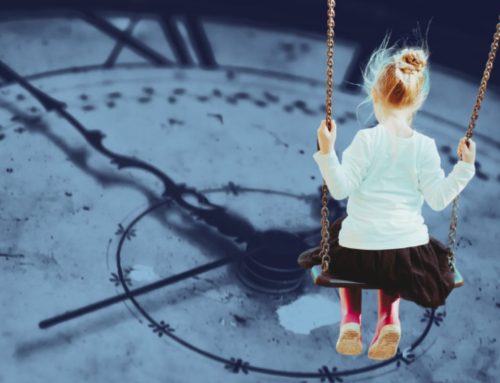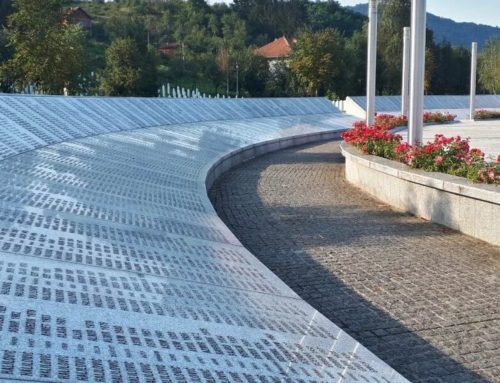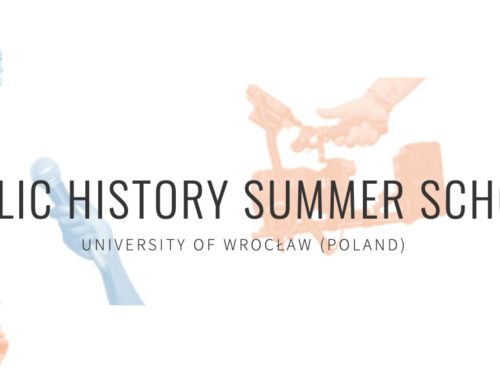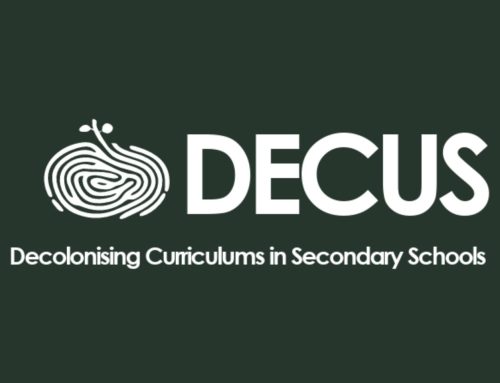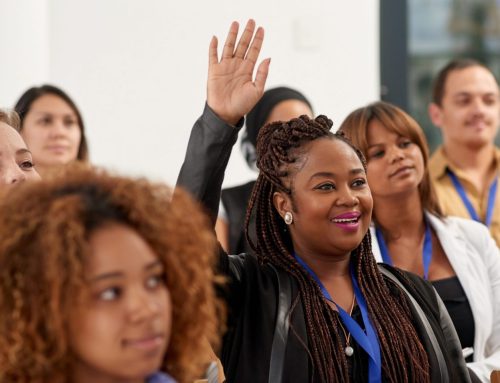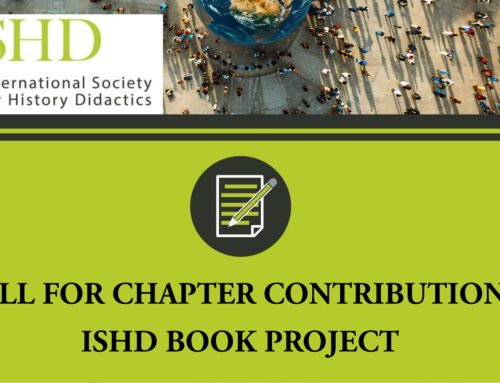Bob Stradling
EuroClio Affiliate: 1992 – present
“EuroClio gives me an opportunity to have my own views challenged.”
Dr. Robert Stradling has brought the thinking about history education in Europe to a higher level by sharing his insights in books, lectures, and workshops, contributing to policy recommendations, and developing educational resources. He has been one of the driving forces intent upon mainstreaming the concept of multiperspectivity in history teaching, and he has worked intensely to deepen understanding of the concept and promote its use, in addition to providing practical support to teachers. As part-time consultant to the Council of Europe, Bob has been the author or co-author of many publications which have been translated in over 20 languages, including the Handbook for Values for Life in a Democracy with Chris Rowe (2009), Cross-Roads of European History – Multiple outlooks on five key moments in the history of Europe + CD-ROM with Chris Rowe (2006), Multiperspectivity in History Teaching: a Guide for Teachers (2003), and Teaching 20th Century European History (2001). Bob Stradling has been a supporter of EuroClio since its beginnings in 1991-1992 at the initial conference in Leeuwarden. In recent years, he has been a primary contributor to the development of Historiana, a digital learning resource on European history and heritage designed to help educators deliver innovative and responsible history to their students. In 2007, he agreed to become a member of
the Historiana Advisory Board, and since 2009 he has been leading the development of Historiana as Editor-in-Chief. From 2009-2013, he has supported an international team of history educators from EuroClio in the development of thematic case studies structured around a set of key questions that allow for comparison between countries, and he developed the thematic approach that underpins Historiana. Since 2014 he led the creation of Historiana modules on World War 1 and World War 2 as key moments in European history and heritage, providing structure and contextual information and ensuring balance for thousands of sources, including many that are unknown to most history educators. He has supported trainees at EuroClio in their efforts to complete transnational source collections, and he has edited their materials since 2013. From 2014 to 2016, Bob has also been an advisor on historical content and a supporter of the development team working on a unit to learn about the European Union from a historical perspective.
How did you first get involved with EuroClio?
It’s a rather long-winded story, so bear with me! Back in 1990 I was doing an international survey for CIDREE (the Consortium of Institutions for Development and Research in Education in Europe) on the content of history curricula across Europe. It covered about fifty educational systems. What I was seeing while I was doing this survey was that the status of history education over the previous 20 years had been declining, partly because practice in a lot of schools was not keeping up with the innovative approaches that were being developed which emphasised not just the learning of content but also the development of historical thinking. School history curricula often consisted of a two-year survey, sometimes described as “From Plato to NATO”, which was then repeated in greater depth for another two years. There was also growing concern about the teaching of biased, nationalistic history in some European states.
This report came to the attention of the Council of Europe’s Deputy Director for education, culture and sport, and a good historian, Maitland Stobart, and he called me out to Strasbourg to discuss it and then asked me to work as a part-time consultant on history education for the Council of Europe. At around the same time, he had also been talking to Joke van der Leeuw-Roord as well. Joke at that time was the President of the Dutch History Teachers’ Association and Maitland Stobart wanted to discuss the possibility of setting up an NGO that might be able to work with the Council of Europe to spread good practice in history education.
In December 1991 the Council of Europe organised a pan-European conference in Bruges in December 1991. The theme was ‘Learning and Teaching History in the New Europe”. Many of the participants then helped to form a network of history educators prepared to work together and with other colleagues. A year later the Council and the Dutch History Teachers Association invited around 30 to 40 representatives from other History Teachers Associations to Strasbourg to discuss what was needed. They agreed that it was necessary to set up an international organisation to support history education in Europe. At first, they came up with a really awful name for it: the “European Standing Conference of History Teachers”. Luckily, the Belgians came up with a much better name, EuroClio! Then in 1993, Joke and the Dutch History Teachers Association organized a conference in Leeuwarden. I think there were representatives from 14 European countries, and this was EuroClio’s inaugural conference. I attended along with others from the Council of Europe and acted as the rapporteur for the conference.
I recall my relationship with Joke at the beginning of the conference being a bit spiky, mainly, I think, because she wasn’t sure what I was going to say in my report about the conference! In fact, Maitland Stobart was already committed to the idea of EuroClio, so even if my report had been negative, would not have changed the Council’s support for the NGO. In fact, my report, which was written mainly for Council staff and the Parliamentary Assembly, recommended that the Council should welcome the setting up of EuroClio and work with it in the future.
After that, we worked very closely together on three main initiatives. One was in the early 90s after the fall of the Soviet Union. The Council of Europe set up something called the Secretary General’s Initiative, which involved working with history educators and curriculum administrators in all the former Soviet Republics. There were three main aims: to use historical sources to develop analytical and interpretive skills; to move away from the ideological content of the old history curricula, and to explore ways of encouraging cross-border initiatives in history education. EuroClio played a very important role in this. The Council of Europe could pay for and coordinate conferences and workshops, but it needed highly experienced history teachers to provide the input.
It was actually during this time that EuroClio grew rapidly. By 2000-2001 the membership had risen to 76 associations. The sessions that EuroClio was running were so good that word of mouth was getting around, and more people were interested. Interest was also heightened because schools were actually using textbooks that were developed by cross-border teams established by EuroClio.
Another project on which EuroClio and the Council of Europe worked together was the Stability Pact for Eastern Europe in the late 1990s. The former Republic of Yugoslavia had disintegrated, and conflicts had broken out in the region. Something had to be done to try to get these people together again. By 2000, there were steps being taken at a geopolitical level, with the U.S. actively involved, and all of this created a basis for a negotiated peace, the Dayton Peace Agreement. Once again, the key question for the Council of Europe was how to help with the reforms to history education that were planned in the new states. Once again, there was a lot of work for EuroClio to be done with the support from the Council of Europe. I was actively involved with Joke, and we were both involved at that time in a lot of history education workshops in the region. From a personal point of view, this was fantastic! To get into parts of Europe I’d never been able to enter before, to sit down with teachers and historians, and to talk about what needed to be done was quite an experience.

The third initiative we worked together on was the Council of Europe initiative: Learning and Teaching about the history of Europe in the 20th century. I was involved in the development side of the project and the steering committee had several representatives form EuroClio, including Joke. This led to a number of publications including a Handbook: Teaching 20th Century European History and EuroClio was very active in helping to organise a number of teacher workshops based on the outputs of this initiative.
However, we started getting feedback from history teachers that they got the message about the integrating skills-based teaching into their classroom work and they also got the message about a greater focus on European and not just national history but where could they get the sources form all over Europe. We realized we had to do something about this! The Council of Europe initiated a project which was carried out by Chris Rowe and myself which led to the production of a CD-Rom of source material, which we structured around several key years in European history. We gathered lots of source material, both written and visual, from all over Europe and put that onto the CD-Rom for teachers to use. But, by the time we finished this, we felt that we had been overtaken by new technologies. At the same time Joke had been saying, “what we really need is a website!” Jonathan and Steven had joined the EuroClio team, I think in 2006, and brought new energy and skills and so the website Historiana was born. Editing Historiana is my current job, and that’s how I am involved with EuroClio today.
Q: Do you have a first or favorite memory of working with EuroClio?
I think there were two that stuck out. For the first one, I was with some EuroClio colleagues in 1991, and we were in Moscow. We had a meeting with representatives of history associations, people involved with developing new curricula, and also people from the Ministry of Education. We attended the seminar, and the formal meeting was dominated by the Ministry. The representatives from the Ministry were quite nervous because of the presence of the Council and EuroClio. We felt that there was a certain resentment that these outsiders were trying to show them ‘how to teach history.’ Understandably, it was quite tense in the room. At about 4 o’clock, a row of black cars emerged outside, and the officials left. We all thought that the day had ended. But as we headed for the lift, the representatives of the history associations and curricula developers all said, “Now we can have our seminar!” We went back to the room, and there we had an open discussion, with lots of ideas presented about things they’d like to do and how EuroClio and the Council could most effectively support them. This led to years of close cooperation.
A similar meeting took place in Moldova, and this was also a part of the Secretary General’s Initiative. I was there with Joke, and it wasn’t Ministry officials this time, but rather Professors of History who sat in the first four rows of the conference hall. All of the history teachers sat behind them, and there was clearly a strong deference towards the professors. Now I am the same age as most of those professors were then, so perhaps I am now more sympathetic than I was then. But our impression was that they were not interested in innovative approaches to history education. We were talking about skills-based approaches to teaching and learning, multiperspectivity, and the idea that history deals with evidence which is often partial and drawn from what is left on the record. It appeared from the questioning that this approach was not very popular in the room. The professors believed that the history they taught, which influenced what was taught in schools, was the plain truth of what had happened. Joke and I felt that we were not having much impact but again, when the professors left, we found that the teachers wanted to stay on and talk about classroom teaching.
These kinds of moments are so powerful, because at one point we all felt as if we were treading water, seemingly not getting anywhere. But the next, we could talk openly and frankly, and things began to happen!
Q: How did EuroClio contribute to your work? To history education in general?
EuroClio has definitely changed how history has been taught, especially in central and eastern Europe since the 1990s!
Personally, I’ve acquired a lot of great friends, both in the secretariat and across the membership network. That is one of the great aspects of something like the 25th year celebration. Because I don’t teach anymore and I live in the north of Scotland, I don’t meet students and young people to the same degree to talk about history anymore. EuroClio gives me an opportunity to have my own views challenged. People like Steven, Jonathan, and Judith always ask me questions I can’t easily answer, questions I have to go away and think about for a bit. These kinds of tough questions are important in one’s development, regardless of one’s age.
Q: What is the role of EuroClio today? In the future? How will it develop?
That’s difficult purely because of the problem of funding an NGO. Inevitably, the direction of development depends in part on what sponsors want. But I think a major task is perhaps to become GLOBALCLIO and not simply EuroClio. EuroClio already has links with countries in the Middle East, Japan, Korea, and the U.S. At the risk of sounding like a 1930s dictator saying, “Take over the world”, I would like an even bigger EuroClio with a wider target audience to work with. I do feel that the issues we all face now have historical roots. Whether it is terrorism, problems in the Middle East, or problems within Southeast Europe or Southeast Asia. The roots of these issues are in history. A lot of the decisions made at the end of the first and second world wars have come home to roost, and therefore, they should be looked at from the widest possible perspective. I suppose that raises the issue of a connection with China and Japan as well. We struggle to access sources, and we especially struggle with Japanese sources. So, we need links with these countries for Historiana, and we need to look at the possibility of learning from each other in terms of how we teach history and the purpose of history in schools.
I would also highlight how seamless the transition from Joke as Director to Jonathan has been. Jonathan, Steven, and Judith have brought new energy, ideas and skills and Joke is still involved. They have sustained EuroClio’s capacity for networking which Joke had originally brought to the organisation. I believe that this capacity to network and to use the network to full effect is one of the best things that EuroClio has to offer.
Q: What could EuroClio do better? Any disappointments?
The short answer is, no! I have thoroughly enjoyed working with EuroClio; they are a great bunch of people. One of the best things that ever happened was the decision to bring in trainees. And I wish that they could have longer terms with us! Trainees learn so much but at end of a semester, they’re off again! That’s great for them, and they hopefully have seen a bit of Europe during their time with EuroClio as well. Yet, from another point of view it’s a kind of disappointment to let them go when they are working so well with us. However, the traineeship is a brilliant idea. I wish we had had something similar at my research institute at Edinburgh University.
I guess one thing is that we lost two years on Historiana development because we initially picked the wrong people to develop the website. But we are catching up now! This brings me to another idea; something that is also so important is building new generation of people!
The only other disappointment is probably that we’ve never had quite as much involvement from the French-speaking part of Europe as from the rest. We do have French speakers within the EuroClio secretariat, but it’s not easy to get them to come and work with us.
Q: In your career with EuroClio what has been your greatest challenge? How did you overcome it?
One is money! There is no doubt about that. It’s true for the Council of Europe as well. Unfortunately, you can’t just say, “This is a great enterprise, so let’s sell this idea to all international organizations. They’ll fund it, and it’ll just happen!” That won’t work, so you do things in bits and pieces.
The other challenges are heavily dependent on the cooperation of volunteers. I wish we could pay them for their work but mostly this is not possible. Development is necessarily slower than we would like. Inevitably volunteers working in their spare time take much longer to develop materials for us than they would if they could take time out to work full-time. That is just one of the practical realities of that kind of thing.
It is also difficult to keep content up to date. Over the past two years, our editing team for Historiana has also been the development team. We developed content for WWI, WWII, and the Cold War. We are fairly certain we can’t carry on that way. It’s become a full-time job! So, volunteers must be engaged, but in a different way. The membership is great in workshops, giving up their valuable time to run sessions and organize events. But we really need some of them to just sit and write material!
Additionally, it is nice to think of history as an objective subject, but it does have social aims in schools. The question is, what are they and do they lead to biased history? How, in the end, can we best encourage all those involved in the educational process to work with diverse and even contradictory perspectives? Keeping at the forefront of modern technology is another challenge, with mobile phones and apps. Looking at the implications of new technology for teaching is intriguing, because we’ve moved away from the old style of a teacher standing, telling a story and handing out worksheets toward a new style where people have their own personal learning stations. How do we keep up with these changes? These are major challenges facing EuroClio and history educators.
Q: Within EuroClio and outside of EuroClio, who has influenced you the most professionally and/or personally?
In terms of my thinking about history education, Maitland Stobart has had a great influence on me. I’d worked as a historian in London, but then moved into policy research, and this path had taken me away from what I really loved: history. He gave me the opportunity in my spare time to do history, and to think about it as a discipline. Before, I just did history. I didn’t think about what was involved in the process, or how you would teach others that process, because I was always working as a researcher at that time, not teaching students. So, it never had occurred to me to ask, “What do you have to do to begin to understand the process of history?” What it is to learn how to think historically and to be historically conscious?” Stobart helped give me the space to grow in this respect.
A number of British social historians also influenced me, because what truly fascinates me is how ordinary people live! For example, there was a photograph that influenced me quite a lot. It was from the first world war of a farmer in the middle of Germany right in the middle of everything that was happening, just getting on with farming, totally oblivious to the massive conflict on his doorstep. It made me realize, we say, “Germany goes to war,” but of course it doesn’t. Governments go to war, and they conscript people to fight for them. The families of those conscripted experience it directly, and with ‘total war’ people feel the effect of war more, but for a lot of the time, people are just getting on with their lives. We tend to forget that, and we get locked in as historians to big questions and big events. So, I actually think that because of this interest, if I had my time again, I’d be a social historian.

Q: Why do you value teaching with multiple perspectives? Is there a specific instance or historical event that shaped your interest in teaching with multiple perspectives?
It was a book about the Spanish Armada, actually, by Garrett Maddingley. He looked at the Spanish Armada from the perspective of what was happening in Madrid and London as you might expect, but he also looked at what was happening in Paris, Amsterdam, and other parts of Western Europe. He was looking at the diplomatic dispatches between them. Suddenly the whole event seemed very different! I’d gone to school and been taught about the Spanish Armada from a totally British perspective. It was just, “We won it. Our sailors were better.” I started thinking that this multiperspectivity was a much better way to teach history.
Not long after I read the book, I was at a conference on World War I that I’d helped to organize. We were discussing the armistice, and the fact that though textbooks make it seem as though events occurred in a linear sequence, it was in actuality far more complicated; things happened in parallel, with contradictory impact. For instance, Wilson was making offers to the German government in Berlin before talking to the British and the French, who’d then been receiving information two days after their own decisions had been made. Again, the narrative you got from different textbooks made it all seem as though it was a linear sequence. In discussions about how to teach this, some teachers were saying that we had to keep it simple, that students might not understand this complexity. This view outraged me! My kids were studying nuclear physics in school, and if they could understand the theory of relativity, they could certainly understand the multiperspectivity behind the negotiation of the armistice in 1918! The task was how to develop the material to teach this effectively, by having more than one language involved, by working together, and by collecting source material from different countries. Though we may never reach ubiquitous multiperspectivity, the hope is that teachers will at least try to include some multiperspectivity in their teaching.
This brings me to another point that struck me. We went to St. Petersberg, and we were looking at 1917. Eisenstein’s film Oktober was a great movie about events at that time. But the perspective is heavily skewed to promote a par4ticular narrative. The storming of the Winter Palace is spectacular, but it is difficult to find evidence to confirm that it actually happened in the way depicted in the film. Once I started exploring the evidence available what emerged was some contrasting perceptions of the event. For example, one man walked past the Square at 11 at night, didn’t hear anything, and just walked home. One man said he heard some shots fired, and yet another said it was chaos and mayhem. History and the evidence we deal with is always partial and always told from different perspectives, even physically. Lots of historians started employing a kind of legal or trial approach to teaching, emphasizing the fact that witnesses see the same event quite differently. Evidence to corroborate these versions of history is often missing because it is lost or destroyed. Of course, there are dates and people that we can all agree on, but there’s an awful lot upon which we can’t agree. This is again the question of how you get people to understand that there isn’t just one truth; rather, there exist many variables to deal with depending on the available evidence in the record.
Q: Since your work on Crossroads of European History: Multiple Outlooks on 5 Key Moments in the History of Europe (2008) is there any event that you wish you could add to the work?
Yes, lots! The choices made were practical, due to limited funds. We focused on 1848, 1913, 1919, 1945 and 1989. What the Council of Europe does well is organize international conferences, so they wanted to have an international conference around every one of these key dates. So, we had to come up with five dates. Part of what was so cool about the research for this project was that we got to look at the history of the event in the places where they happened. For example, we had a conference in Yalta in the room where Stalin, Churchill and Wilson met.
If we could have added more key dates, I would certainly have included think the Cuban Missile Crisis. Also 1968 was a crucial year. One of the reasons why it was so important was because in a way, there were protests all over the West, but also protests in the East that we didn’t always hear about. We were protesting civil rights and there were student protests, industrial strikes, and political changes. It was a year of change, even within Central and Eastern Europe in the post-Stalin era, that created a generation of liberal politicians.
1914 was also one to add. In a way, we’ll never quite understand why the diplomatic system that had resolved a whole series of crises in the previous four decades failed in 1914. The 1929 Wall Street Crash is also crucial. Its impact was felt by so many across the world, and it wasn’t just an American thing. The 1936 Spanish Civil War was important, not just because of what was happening in Spain but also because Italian and German forces used it prepare for war. A lot of people of my generation had older relatives who fought in the international brigade. This civil war probably made war much more likely in 1939. It’s not an exact date, but the Vietnam War would also be on that list. Possibly, I would suggest the date when the French were forced to withdraw, and the U.S. had to consider what it was going to do. And that is just relatively modern history.

